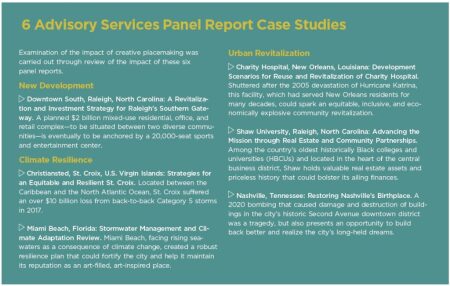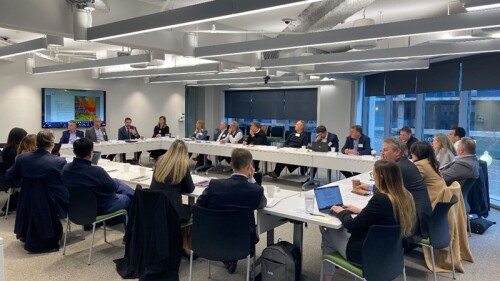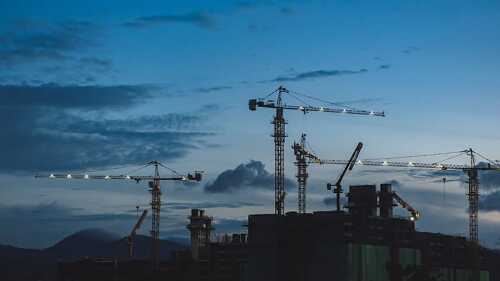ULI’s Advisory Services program, which has convened more than 700 Advisory Services panels since its inception in 1947, over the years has gathered experts in such fields as affordable housing, transit-oriented development, urban revitalization, environment and sustainability, and brownfield restoration to help communities address challenges and opportunities presented in these areas.
But in recent years, demand has been growing for panel expertise in the field of creative placemaking, the creation of a distinctive sense of place—rich in art and culture, engaging, and economically thriving—that attracts people. In recent years, nearly half the Advisory Services panels have included recommendations that leverage creative placemaking to address challenges presented by panel sponsors.
As creative placemaking has proliferated in the real estate industry, questions regarding its costs and benefits have often surfaced: How much does it cost? What is the business case or return on investment? Does it enhance the value of real estate? And what value is delivered?
As a launching point to get answers, ULI in late 2021 turned to its knowledge base of Advisory Services panel reports. During a rigorous discovery process, six panels with creative placemaking content were selected from a sea of possibilities. The subsequent research effort was aimed at understanding whether panel recommendations specific to creative placemaking had been implemented and what results had been achieved.
The findings of this research were compiled in the 2022 ULI report Creative Placemaking: Recommendations from and Impact of Six Advisory Services Panels, which highlights the essence of each panel, spotlights recommendations that led with creative placemaking, and discusses post-panel impact of implemented recommendations. The stories that emerged from this research also illuminate how creative placemaking contributes to equitable development and aligns with the Institute’s commitment to diversity, equity, and inclusion in real estate.
The panels examined were convened from 2017 to 2021, which is a brief time to ascertain quantifiable benefits. However, a majority of the panel case studies reported social impact, many anticipated economic impacts over time, and one reported health and environmental impacts.
The scope of the research involved interviews with panel sponsors, ULI panel chairs, and community and government stakeholders, coupled with a review of related reports, studies, and press. This deep dive into the six panels revealed that creative placemaking delivers stakeholder benefits along three dimensions—social, economic, and environmental and health—and offered important lessons about how to optimize these benefits and thereby the value of a real estate development project.
Six Case Studies
The selected panels represented a wide range of land use challenges. A panel in Raleigh, North Carolina, examined new development sandwiched between two racially diverse neighborhoods south of the central business district. Two panels were convened to examine the impacts of climate change—one in St. Croix, U.S. Virgin Islands, in response to catastrophic damage from back-to-back Category 5 hurricanes, and the other the threat of rising seawaters in Miami Beach. Two studied the revitalization of neglected areas—a historic community in New Orleans and a historic university in Raleigh, both in thriving downtown districts. The sixth examined the restoration of a historic downtown neighborhood in Nashville after a bombing.
Social Impact
In contemplating how to address challenges faced by the communities, panel members heard many community members express concern that the history and culture of place would be lost as the development effort proceeded. In fact, this concern surfaced in five of the panel case studies.Many of the case studies involved actions aimed at lifting art and culture, which in turn helped build community trust and push the project forward. Christiansted, Virgin Islands, for example, made placekeeping a central theme of its restoration plan. Shaw University in Raleigh persuaded the city to plan a trolley stop in front of the university and wants to attract visitors to its campus with a cultural heritage trail that promotes the university’s rich history.
Charity Hospital in New Orleans, being transformed into a mixed-use complex with residential space on its upper levels, will have public space on the ground floor activated with art and cultural programming, thereby retaining its history as a welcoming public space. This move is especially important to locals whose families were patients or healers—or both—at the hospital and still mourn its loss.
Also, in Raleigh, Downtown South held early community engagement sessions to ascertain community wants and needs. One neighborhood desire, for example, was to retain its rich African American history and culture, which will be enabled by guideposts throughout the neighborhood and a city-managed public art program.
Matthew Kwatinetz, a professor at New York University, consultant, and author of Thriving in Place, a report for Austin, Texas, about cultural spaces and place-based economics, highlights the social benefits of art and culture on community life. He asserts that proximity to art and cultural assets matters, especially for low-income communities. Kwatinetz cites a study conducted by the Social Impact of the Arts Project that found that a rise in student English scores in these low-income communities corresponds with a reduction in child abuse and neglect, obesity, and serious crime.
He also notes that a 2018 survey of 3,000 people, conducted by the Americans for the Arts (AfTA), a U.S. arts advocacy nonprofit, found that a majority of Americans believe “the arts unify our communities regardless of age, race, and ethnicity.” This is particularly relevant and needed in these turbulent times of divisiveness.
In Charlotte, North Carolina, Erin Chantry, the city’s urban design planner, says the city is serious about equitable development and the prosperity of all its residents. Charlotte, with the aid of philanthropic efforts, is funding the creation of public spaces that reflect the history of neighborhoods. An example is in the city’s Historic West End neighborhood. The city-funded The Ritz at Washington Heights is public space on the site of the historic Ritz movie theater, which served Black residents when they had limited options for watching movies during the Jim Crow era. Adorned with plaques that tell the story of the neighborhood’s rich Black history, it is a frequent site of respite for the locals.
Economic Impact
Creative placemaking has an economic impact on communities because property values often rise due to proximity of art and culture assets. Though time will tell, evidence from all six case studies indicates expectations are that the investment in creative placemaking will have a positive economic impact over time. For example, Christiansted and Nashville, faced with recovering from a disaster, both decided to lead with art to restore and activate the devastated areas. This is a good approach in view of facts about the economic impact of arts and culture:
According to the Arts and Cultural Production Satellite Account, released by National Endowment for the Arts (NEA) and the Bureau of Economic Analysis (BEA), arts and culture added $876.7 billion, or 4.2 percent, to the U.S. gross domestic product in 2020. Arts and culture represent a larger share of the U.S. economy than transportation, agriculture, and utilities.
A 2022 report, A New Bottom Line: The Value & Impact of Placemaking, by the Toronto Metropolitan University and other partners, including the Daniels Corporation, found that people are 50 percent more likely to spend time in places with creative placemaking than those without. This, in conjunction with the findings cited above, implies a compounding of the social and economic benefits of creative placemaking.Michael Henehan, president of the Bozzuto Development Company, noted the impact of Monroe Street Market, a $250 million mixed-use, transit-oriented development in Washington, D.C., with 27 artist studios on the ground floor of two of its three buildings. In a post-project review, he was convinced that the decision to focus on creative placemaking was the right one for the neighborhood and contributed to faster lease-ups, higher retention rates, and a reduced project cycle time, speeding up development.
Another example of economic impact can be seen in the Distillery District on Toronto’s Lake Ontario shoreline. In 2001, Cityscape Holding Corporation acquired the site of a 158-year-old distillery, defunct for more than a decade. In a marvelous example of adaptive use, a Victorian industrial complex of 47 buildings was transformed into an arts and culture center that opened in 2003. The developers blended old and new, integrating beautiful Victorian-style buildings with 21st-century design and creativity; carefully curated a selection of retail spaces, art galleries, studios, theaters, restaurants, and cafés; and installed public art throughout the complex. This site, once home of the nation’s largest taxpayer as a distillery, is now one of Canada’s prosperous and most acclaimed art, culture, and entertainment centers. The area attracts millions of local, national, and international visitors annually and has been a catalyst for the development of millions of square feet around it. Direct and indirect annual economic benefit is estimated at tens of millions of dollars in tax revenue.
Michael Spies, former ULI governing trustee, asserts that art and culture must be part of value creation during design at the start of a real estate development project. Spies is funding a two-year ULI program, Art in Place, to connect artists and developers so they can have meaningful conversations that lead to tangible arts and culture–inspired projects.
The program, enabled by a global cohort program led by district and national councils, includes artist and developer convenings, community mixers, and ULI technical assistance panels (TAPs).
Environmental and Health Impact
Leading with art and culture helped address a number of concerns for the city of Miami Beach. Among those were resident pushback and aesthetic concerns about large generators being located in neighborhoods, lack of resident awareness of the severity of climate change’s impact on the city and the role residents could play in helping address it, and innovative solutions to climate change impacts, such as addressing the die-off of coral due to rising seawater temperatures, which makes the city more vulnerable to higher sea levels.
The city employed strategies involving art and culture to address all these concerns. Three examples of art-driven projects that have delivered environmental and health benefits to the city are the following:
- A sculpture installed in the Sunset Harbour neighborhood served as camouflage for a large generator hidden behind it. Residents returning home and visitors are greeted by this welcoming sculpture that marks the neighborhood.
- The city’s resilience program recruited Misael Soto for its artist-in-residence program. He created a pop-up stadium made from 6,000 bags of sand that served as a gathering place for resident awareness discussions about climate change and how residents can help address it.
- Another artist, hired by the resilience program, designed an underwater sculpture made from materials that regenerate dying coral. The sculpture, visited by snorkelers and scuba divers, will be completely covered by coral over time.
As Miami Beach demonstrates, art and culture can promote the environment and help create healthy places in innovative ways.
In San Antonio, Texas, is another example—the pavilion at Confluence Park. An artist and architect team jointly designed a concrete pavilion that not only offers cover from the sun and rain, but also captures rainwater and channels it to a reservoir beneath the park’s surface. The rainwater is recycled and serves most of the park’s water needs.
Lessons Learned and Next Steps
The six case studies and other examples shared show the multidimensional applications of creative placemaking. Many social benefits have come from deployment of creative placemaking principles, ranging from connecting people and promoting social cohesion to reducing crime and facilitating the building of trust among stakeholder groups. Creative placemaking is an economic driver: all six case studies expect economic benefits to be derived from each individual deployment.
In many of the cases studied, creative placemaking is a core element of the strategy. Anecdotal evidence, backed by a growing number of studies, demonstrates the value and economic benefit of creative placemaking. The question to ask is not whether value is added to a real estate project by employing creative placemaking, but how much value is lost by not doing so.
Creative placemaking enables outside-the-envelope solutions to tough challenges. The possibilities are vast, as the examples from Miami Beach and San Antonio illustrate.
Done well, creative placemaking is a strategy and tool promoting equity, accomplished by leading with a placekeeping approach—one committed to attracting energy, amenities, and investments to a place while acting to retain its people, character, history, and culture.
Critical factors for success are applying best practices that envision a diverse, inclusive, and equitable place and engaging artists and the community early in the real estate development process. This will be facilitated by the AIP program, which is expected to generate knowledge and lessons learned as it proceeds through 2024. However, there is no need to wait for those results before getting started.
The following are steps real estate professionals can take now to leverage ULI’s growing creative placemaking knowledge base:
- Read the 2022 ULI publication Creative Placemaking: Recommendations from and Impact of Six Advisory Services Panels to do a deeper dive on the panels featured that align with your specific challenges and opportunities.
- Get grounded in the topic of creative placemaking and real estate development. A good place to start is the 2020 ULI publication Creative Placemaking: Sparking Development with Arts and Culture.With an eye toward equitable development, shore up your knowledge about why a focus on equity and inclusion is relevant and important in these times. ULI’s 2022 publication, 10 Principles for Embedding Racial Equity in Real Estate Development is a good place to start.
- Consider how a ULI Advisory Services panel or a technical assistance panel could help you solve a pressing land use challenge. Contact ULI’s Advisory Services program to explore the feasibility of and options for convening an Advisory Services panel or your local district or national council to explore convening a TAP.
Get started on creative placemaking if you have not already—or enhance your skills and knowledge of the approach and engage ULI resources to help—and you may optimize value creation and enhance the stakeholder benefits of your next project.
JUANITA HARDY, a former ULI senior visiting fellow for creative placemaking, is a creative placemaking consultant based in Silver Spring, Maryland. She is the author of the ULI reports Creative Placemaking: Recommendations from and Impact of Six Advisory Services Panels and Creative Placemaking: Sparking Development with Arts and Culture.









